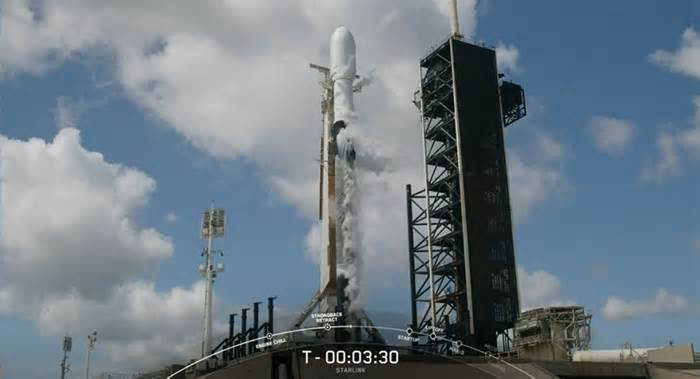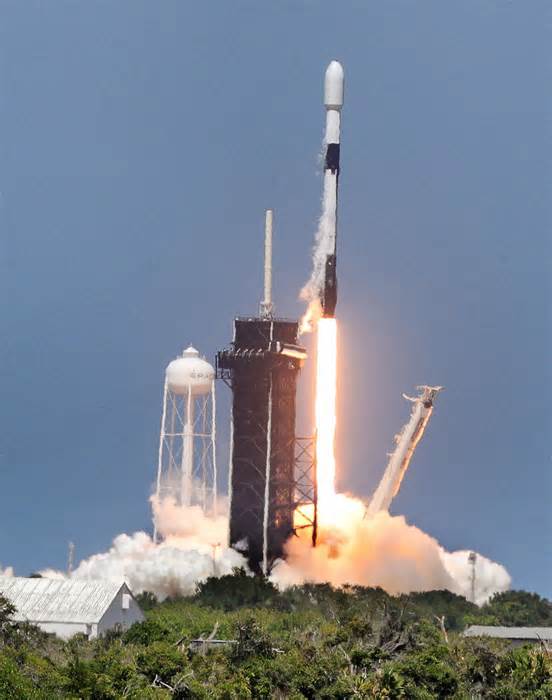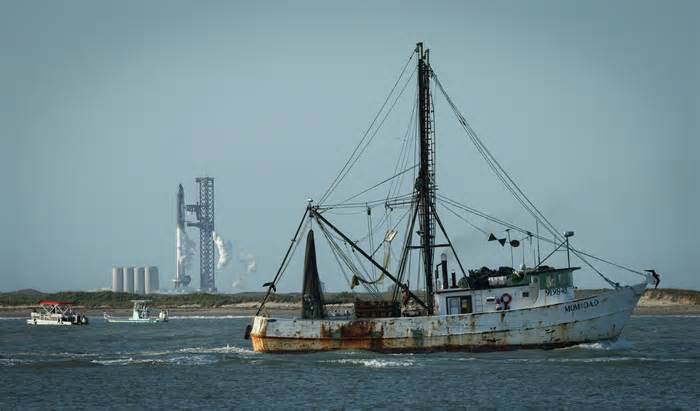
WATCH: Boeing Starliner capsule is on its way home from space — without astronauts on board
- by KSBW The Central Coast
- Sep 07, 2024
- 0 Comments
- 0 Likes Flag 0 Of 5

Updated: 5:59 PM PDT Sep 6, 2024
GET NATIONAL BREAKING NEWS ALERTS
The latest breaking updates, delivered straight to your email inbox.
Your Email Address Jackie Wattles, CNN
Boeing’s Starliner capsule undocked from the International Space Station Friday evening — concluding its nearly three-month stay in space. But it’s flying with an empty cabin, leaving behind two test pilots who must now remain on the station for another five or six months.The Starliner left its docking port at the space station just after 6 p.m. ET, according to NASA. The capsule will spend about six hours free-flying through orbit as it slowly makes its descent toward home.In the video player above: See the capsule undock from the ISSBefore the capsule departed, Butch Wilmore and Suni Williams — the two NASA astronauts who flew Starliner to the space station back in June — wished the spacecraft, nicknamed “Calypso” by Williams, luck on its long-awaited and unexpected journey home.“It is time to bring Calypso home,” Williams said to mission control Friday evening. “You have got this. We have your backs, and you’ve got this. Bring her back to Earth.”Close to midnight, the capsule is expected to reach one of the most important and treacherous legs of its test flight: reentry. The milestone will require the Starliner to carefully orient itself as it plunges into the thickest part of Earth’s atmosphere while still traveling at orbital speeds — typically more than 17,000 miles per hour (27,400 kilometers per hour).As with every spacecraft that returns from orbit, the pressure and friction of reentry will put immense strain on the vehicle. The process can heat up the spacecraft’s exterior to more than 3,000 degrees Fahrenheit (1,649 degrees Celsius).Then, as the Starliner free-falls through the air, a set of parachutes — which Boeing redesigned and tested as recently as January — must safely slow the capsule before the vehicle deploys airbags for a gentle touchdown on terra firma.Starliner is set to be the first US-made capsule to parachute to a landing on the ground rather than splash down in the ocean. Boeing hopes that approach will make it easier to recover and refurbish the spacecraft after flight.The targeted landing site for the vehicle is in New Mexico at the White Sands Space Harbor, an area within a vast missile range of the same name that was previously used to train NASA space shuttle pilots. According to the space agency’s latest timeline, Starliner is expected to hit its mark around 12 a.m. ET.Starliner’s troubled test flightConcerns about Starliner’s ability to hold a precise orientation while reentering Earth’s atmosphere — given several issues that cropped up during the first leg of its trip — is one of the reasons NASA opted not to fly Starliner’s crew home with the vehicle. Instead, the new plan is for the test flight astronauts, Suni Williams and Butch Wilmore, to stay aboard the space station and catch a ride home on a SpaceX capsule in February 2025.At first, NASA officials expressed confidence they could pinpoint Starliner’s issues and hash out a plan to safely return the vehicle with crew. But two lingering issues ultimately derailed those plans.First, a series of helium leaks sprang up during Starliner’s outbound flight in early June. Helium is used to pressurize some of the vehicle’s thrusters, which help the spacecraft stay oriented in space, and problems with some of the helium spilling out delayed this crewed test mission even before takeoff.Separately, five of Starliner’s 28 “reaction control system” (RCS) thrusters abruptly stopped working en route to the space station. Four were ultimately recovered, but at least one will remain out of service for the entire mission.NASA and Boeing kept the Starliner in space for weeks as they worked to understand those problems, stretching William’s and Wilmore’s stay from the expected length of about eight days to months.At one point, NASA and Boeing said they believed they understood the likely cause of Starliner’s problems. The “doghouses,” or structures that contain propulsion equipment, were flying hotter than expected, causing some Teflon seals within the thruster systems to bulge — restricting the flow of propellant and causing the RCS thruster outages. Separately, officials said, the helium leaks might have been caused by seals that became degraded by exposure to propellant vapor.Determining the root cause of a spacecraft issue, however, is not a perfect science.And even if the issues were well understood, the Starliner team had to face the fact that it would never get to inspect the propulsion system on the actual vehicle in space. It was impossible to survey the problem as the Starliner sat attached to the space station.What’s more, the unit that houses the troubled RCS thrusters and the helium leaks — called the service module — was not intended to survive the trip home. Instead, the service module, which is a cylindrical attachment at the bottom of the crew cabin, is designed to be ejected and disposed of on the way back to Earth. And it will do just that on this mission.The risks aheadThe ambiguity surrounding what exactly happened to the service module’s components was one key factor in NASA’s decision to fly the vehicle home without its crew.“The bottom line relative to bringing Starliner back is — there was just too much uncertainty in the prediction of the thrusters,” said Steve Stich, manager of NASA’s Commercial Crew Program, on August 24. “It was just too much risk with the crew, and so we decided to pursue the uncrewed path forward.”Related video below: 'She's happy in space;' astronaut's mission extended months beyond planDuring its perilous return to Earth, Starliner does have other types of thrusters meant to help the vehicle keep its orientation as it travels through space.Alongside the 28 RCS thrusters are 20 “Orbital Maneuvering and Attitude Control” — or OMAC — thrusters, each of which has about 17 times the thrust of an RCS thruster.But during a previous news conference, Stich described how the problems already identified on the Starliner’s service module might combine to create a disaster scenario.“The worst case would be some integrated failure mechanism between the helium leaks and the RCS thrusters,” Stich said. “For a nominal de-orbit burn, we fire 10 OMAC thrusters in each of the four doghouses, and then the RCS jets are just there to hold the orientation.”But a bleak outcome could arise, Stich added, if OMAC thrusters began failing because of helium leaks.“Then, you could end up with some cases that aren’t easily controlled, and that’s really the more stressing cases that the team is worried about,” Stich said.‘Remain vigilant’During the August 24 news briefing, NASA officials also indicated that Boeing disagreed with some of the space agency’s risk assessments.There was “just a little disagreement (between NASA and Boeing) in terms of the level of risk,” Stich said. “It just depends on how you evaluate the risk. … We did it a little differently with our crew than Boeing did.”But Ken Bowersox, NASA’s associate administrator for the space operations mission directorate, added that the company had left the final decision up to NASA “because of our wider view of all the risks involved.”Boeing said as recently as August 2 that its “confidence remains high” that Starliner can return with crew. But since NASA announced its decision to fly the capsule home without astronauts, the company has said only that it is focused on “executing the mission as determined by NASA, and we are preparing the spacecraft for a safe and successful uncrewed return,” according to an August 24 statement.While flying Starliner home without crew eliminates some risk of catastrophe, “We are still in the middle of a test flight. We have to remain vigilant,” Bowersox said.How Starliner performs on its trip home could have broader implications for the future of the Boeing program. Already, the company has lost more than a billion dollars correcting issues with the vehicle, through years of delays, development setbacks and errors in flight.It is not yet clear whether NASA will require Boeing to repeat this test flight — or if the space agency will consider certifying the spacecraft for regular flight if tonight’s return trip goes well.Boeing has already had to repeat one test mission, an uncrewed test flight that took off in 2019. Software issues prevented the vehicle from entering the correct orbit and even reaching the International Space Station, prompting NASA to require Boeing to repeat the excursion in 2022.
Boeing’s Starliner capsule undocked from the International Space Station Friday evening — concluding its nearly three-month stay in space. But it’s flying with an empty cabin, leaving behind two test pilots who must now remain on the station for another five or six months.
The Starliner left its docking port at the space station just after 6 p.m. ET, according to NASA. The capsule will spend about six hours free-flying through orbit as it slowly makes its descent toward home.
Advertisement
Please first to comment
Related Post
Stay Connected
Tweets by elonmuskTo get the latest tweets please make sure you are logged in on X on this browser.
Sponsored
Popular Post
Tesla: Buy This Dip, Energy Growth And Margin Recovery Are Vastly Underappreciated
28 ViewsJul 29 ,2024






 Energy
Energy



















